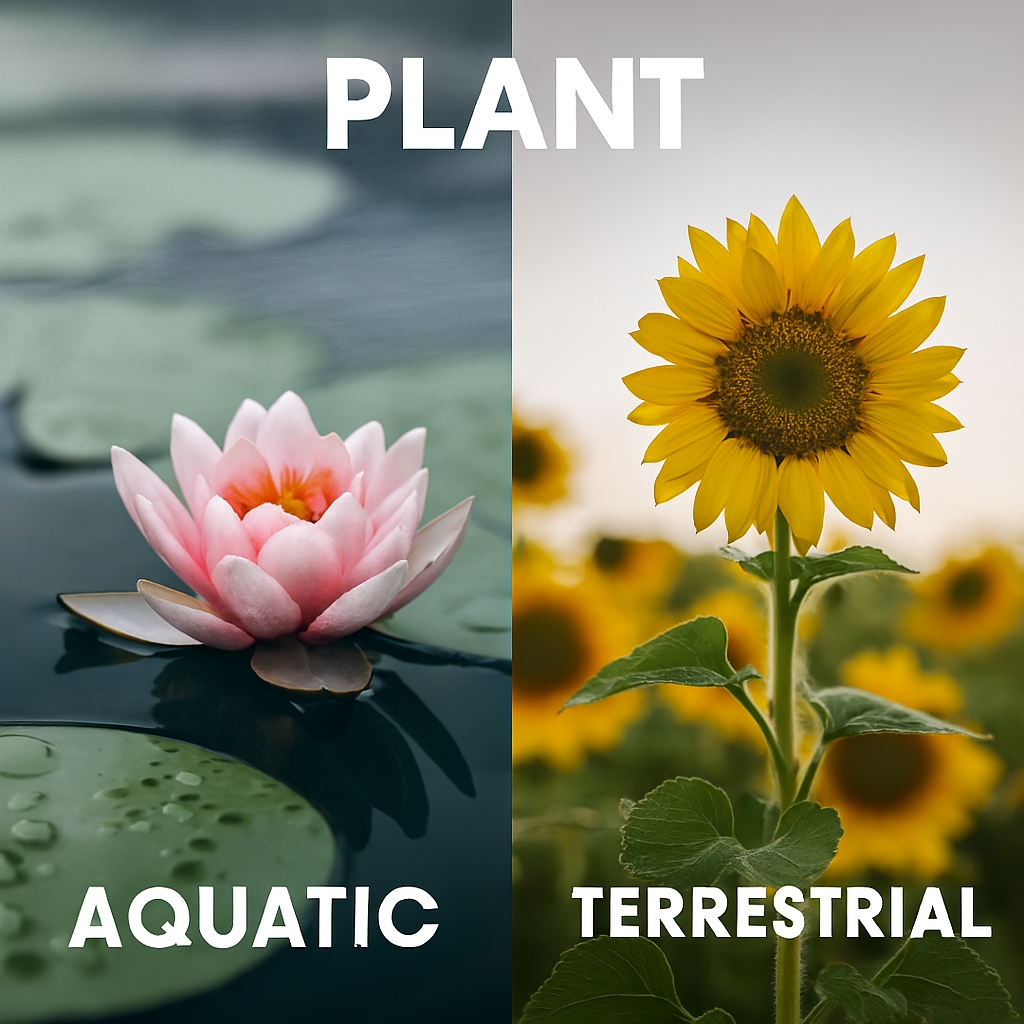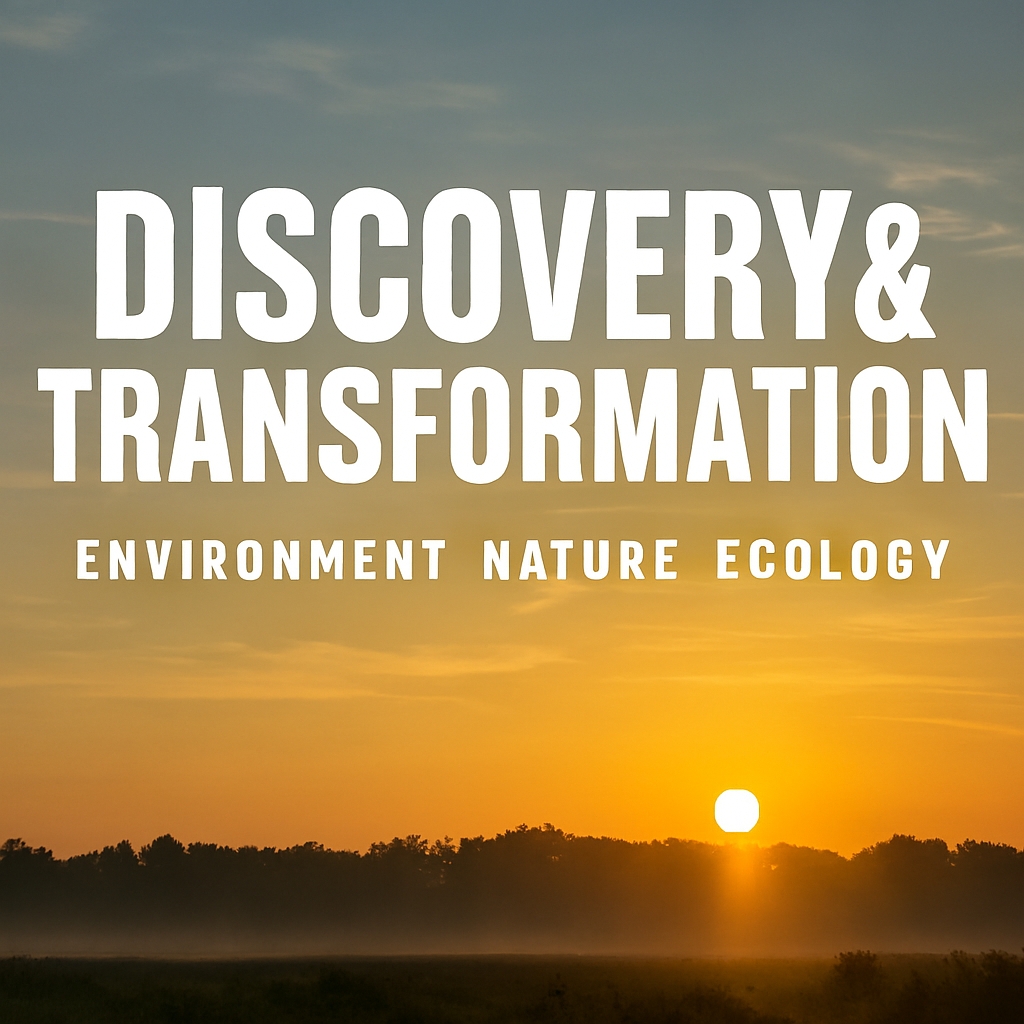How Powerful Surveillance Technology Reshaped Our Relationship with the Wild
Introduction — The Lens That Changed the Landscape
Trail cameras have quietly revolutionized the way humans observe and interpret the natural world. These motion-triggered devices operate continuously, capturing wildlife behavior across seasons, terrains, and timeframes that were previously inaccessible. The shift from human-led observation to automated surveillance has turned nature into a monitored archive of movement, interaction, and absence. Trail cameras have expanded ecological research by documenting elusive species, nocturnal behaviors, and rare interspecies interactions.
They have also accelerated the pace of discovery, revealing patterns that were invisible to traditional fieldwork. The environment is no longer a passive backdrop; it is now a dynamic system under constant visual scrutiny. These cameras have democratized ecological data, allowing researchers, conservationists, and citizen scientists to collaborate across geographies. They have become tools of both insight and intervention, shaping conservation strategies and land management decisions. However, their presence also alters the very ecosystems they monitor, introducing new forms of human influence. The camera is not just a witness; it is a participant in the ecological narrative.

Ecological Insight — What We Now Know That We Didn’t
Trail cameras have expanded our ecological vocabulary in unprecedented ways. Researchers now understand predator-prey dynamics with greater nuance, observing how animals adjust their behavior based on time, terrain, and human proximity. Species once thought to be diurnal have revealed nocturnal patterns in disturbed habitats. Migration routes have been redrawn based on camera evidence, uncovering previously unknown corridors and seasonal shifts. Breeding behaviors, parental care, and interspecies interactions are now documented with timestamped precision.
This data informs conservation strategies, habitat restoration, and wildlife corridor design. Trail cameras also help detect invasive species early, allowing for rapid ecological response. They reveal the impact of climate change on animal movement, breeding cycles, and food availability. The camera becomes a sensor not only of presence but of ecological stress. It records silence where sound once was, absence where abundance once thrived. These insights are not speculative; they are visual, empirical, and often surprising. The result is a more complex, layered understanding of ecosystems in motion.
Table — Ecological Discoveries Enabled by Trail Cameras
| Discovery Type | Example Insight | Conservation Impact |
|---|---|---|
| Nocturnal Behavior | Diurnal species shifting to nighttime activity | Adjusted protection zones and monitoring |
| Migration Corridors | Unexpected seasonal routes across fragmented land | Redesign of wildlife corridors |
| Breeding Patterns | Extended parental care in certain mammals | Timing of habitat interventions |
| Invasive Species Alerts | Early detection of non-native predators | Rapid containment and policy response |
| Climate Stress Signals | Altered feeding and mating due to temperature | Climate-adaptive conservation planning |
Behavioral Shifts — How Wildlife Responds to Being Watched
The presence of trail cameras does not go unnoticed by wildlife. Animals often detect infrared flashes, electromagnetic fields, or subtle mechanical sounds emitted by the devices. Some species alter their movement patterns to avoid camera zones, while others become habituated and behave more boldly. These behavioral shifts introduce a layer of complexity to ecological data, as the act of observation itself influences the subject. Predators may change hunting routes, and prey may avoid areas with frequent camera activity.
In some cases, animals interact directly with the cameras, damaging or relocating them. This feedback loop between technology and behavior challenges the assumption of neutrality in ecological monitoring. Trail cameras are not invisible observers; they are active participants in the landscape. Their placement, frequency, and design all shape the data they collect. Understanding these dynamics is essential for interpreting footage accurately and ethically. The camera’s influence must be accounted for in both research methodology and conservation policy. Observation, it turns out, is never passive.
Table — Wildlife Responses to Trail Camera Presence
| Species Group | Observed Response | Ecological Implication |
|---|---|---|
| Large Mammals | Avoidance of camera zones | Skewed population density estimates |
| Small Carnivores | Increased curiosity and interaction | Potential damage to equipment |
| Birds | Altered nesting behavior near cameras | Misinterpretation of breeding success |
| Ungulates | Route changes to avoid infrared flashes | Disrupted migration tracking |
| Rodents | Habituation and boldness over time | Increased visibility but reduced accuracy |
Cultural Perception — How Cameras Changed Our View of Nature
Trail cameras have reshaped public perception of wilderness and wildlife. The footage they produce is often shared widely, turning rare animal encounters into viral content. This visibility has increased public interest in conservation, but it has also commodified the image of the wild. Nature becomes a spectacle, curated through highlight reels and dramatic encounters. The camera’s lens frames what we value, often privileging charismatic megafauna over less visible but ecologically vital species.
This creates a hierarchy of attention that can distort conservation priorities. Trail cameras also challenge romantic notions of untouched wilderness by revealing human intrusion, pollution, and habitat fragmentation. They show the proximity of wildlife to urban zones, highways, and agricultural fields. The wild is no longer distant; it is adjacent, entangled, and vulnerable. These revelations demand a shift in how we narrate environmental stories. The camera does not just record nature; it redefines it for public consumption. Our cultural relationship with the environment is now mediated through surveillance.
Table — Cultural Shifts Triggered by Trail Camera Footage
| Cultural Impact | Example Footage Outcome | Narrative Consequence |
|---|---|---|
| Viral Wildlife Clips | Rare predator sightings shared online | Increased public fascination and funding |
| Urban-Wildlife Overlap | Coyotes near city parks | Redefined boundaries between wild and urban |
| Human Intrusion | Illegal logging or poaching caught on camera | Policy reform and enforcement |
| Species Bias | Focus on large mammals over insects or fungi | Skewed conservation messaging |
| Environmental Decay | Footage of drought or habitat loss | Emotional urgency in climate communication |
Ethical Surveillance — The Moral Weight of Watching
Trail cameras raise urgent ethical questions about consent, intrusion, and ecological autonomy. While animals cannot opt in or out of being recorded, their behavior is altered by the presence of surveillance. This creates a moral tension between data collection and ecological disturbance. Researchers must consider whether the benefits of observation outweigh the risks of behavioral disruption. Ethical placement, minimal interference, and transparent methodology are essential. There is also a question of ownership — who controls the footage, and how is it used?
Indigenous communities may object to surveillance on ancestral lands, especially if data is commercialized or misinterpreted. Wildlife footage has been used in court cases, media campaigns, and policy debates, often without contextual nuance. Ethical surveillance requires more than technical restraint; it demands cultural sensitivity and ecological humility. The camera must be treated not as a neutral tool, but as a relational actor in the landscape. Ethics in ecological observation is not optional — it is foundational to trust and legitimacy.
Table — Ethical Considerations in Trail Camera Deployment
| Ethical Concern | Description | Recommended Practice |
|---|---|---|
| Behavioral Disruption | Altered movement or stress in wildlife | Use low-flash, scent-free, silent models |
| Data Ownership | Control over footage and its interpretation | Establish community-based data agreements |
| Cultural Consent | Surveillance on Indigenous or sacred lands | Seek permission and co-design protocols |
| Misuse of Footage | Sensationalism or legal exploitation | Limit access and contextualize findings |
| Ecological Integrity | Impact on habitat and species interactions | Rotate placement and monitor long-term effects |
Data Politics — Who Sees What, and Why It Matters
Trail cameras generate vast amounts of ecological data, but access to that data is uneven. Academic institutions, government agencies, and private companies often hold exclusive rights to footage and metadata. This creates a hierarchy of visibility, where some actors shape environmental narratives while others remain excluded.
Citizen science platforms have helped democratize access, but disparities persist. Data politics also influence which species are studied, which habitats are prioritized, and which threats are publicized. Charismatic megafauna receive more attention than insects, fungi, or microbial life. This bias affects funding, policy, and public perception. The politics of visibility extend to land use, where footage may support conservation or justify development. Transparency in data sharing is essential for ecological accountability. Open-source platforms, collaborative databases, and multilingual access can help bridge gaps. Trail cameras do not just record nature — they shape the politics of who gets to define it.
Table — Data Access and Ecological Influence
| Data Holder | Typical Access Level | Influence on Conservation Outcomes |
|---|---|---|
| Academic Institutions | Restricted, peer-reviewed | High influence on policy and research funding |
| Government Agencies | Selective, often classified | Regulatory enforcement and land management |
| Private Companies | Proprietary, commercial use | Potential for ecological commodification |
| Citizen Scientists | Open, community-driven | Local stewardship and public engagement |
| Indigenous Communities | Variable, often excluded | Cultural knowledge and ethical restoration |
Environmental Impact — When Cameras Change the Ecosystem
Although trail cameras are designed to be minimally invasive, their cumulative impact can alter ecosystems. Frequent placement in sensitive habitats may disrupt animal movement, nesting, and feeding patterns. The physical presence of devices, even when camouflaged, introduces foreign materials into natural settings. Batteries, straps, and plastic housings can degrade over time, contributing to micro-waste. In high-density deployments, cameras may create artificial corridors or avoidance zones. This can skew population data and misrepresent ecological health.
The electromagnetic emissions from some models may interfere with species sensitive to magnetic fields. Additionally, human maintenance visits to check or retrieve cameras introduce noise, scent, and disturbance. These effects are rarely measured, yet they accumulate over time. Responsible deployment requires ecological mapping, rotation schedules, and biodegradable materials. Trail cameras must be treated as ecological actors, not just observational tools. Their environmental footprint must be acknowledged and minimized.
Table — Environmental Consequences of Trail Camera Use
| Impact Type | Description | Mitigation Strategy |
|---|---|---|
| Habitat Disturbance | Disruption of nesting or feeding zones | Avoid sensitive areas and rotate locations |
| Material Waste | Degradation of plastic and battery components | Use biodegradable and recyclable materials |
| Behavioral Avoidance | Animals rerouting to avoid cameras | Limit density and use scent-free equipment |
| Electromagnetic Effects | Interference with magnetoreception | Choose low-emission models |
| Human Intrusion | Maintenance visits causing stress | Schedule checks during low-activity periods |
Restoration and Reciprocity — Using Cameras to Heal
Trail cameras are not only tools of surveillance — they can be instruments of restoration. When used ethically, they help identify degraded habitats, monitor rewilding efforts, and track species recovery. Footage can reveal the return of pollinators, the regrowth of vegetation, and the reappearance of apex predators. These visual records support ecological storytelling, funding proposals, and community engagement.
Cameras also help validate Indigenous stewardship practices, documenting seasonal rhythms and land-based knowledge. Restoration is not just technical — it is relational. Cameras can foster trust between researchers and local communities when deployed collaboratively. They offer transparency in conservation, showing progress and setbacks in real time. However, restoration footage must be contextualized to avoid oversimplification. A single image of a returning species does not equal ecosystem health. Reciprocity means using cameras to serve the land, not just study it. Healing begins with humility, visibility, and shared responsibility.

Table — Trail Camera Applications in Ecological Restoration
| Restoration Goal | Camera Function | Outcome Tracked |
|---|---|---|
| Species Reintroduction | Monitor survival and adaptation | Population stability and habitat integration |
| Habitat Regrowth | Document vegetation changes over time | Soil recovery and biodiversity increase |
| Pollinator Return | Capture insect activity in flowering zones | Crop resilience and ecological balance |
| Predator Recovery | Track apex species movement and behavior | Food web restoration and trophic regulation |
| Community Stewardship | Validate land-based practices and rituals | Cultural continuity and ecological trust |
Future Design — Building Ecological Intelligence into Technology
The next generation of trail cameras must be designed with ecological intelligence. This means integrating low-impact materials, adaptive algorithms, and ethical data protocols. Cameras should be modular, repairable, and biodegradable wherever possible. Artificial intelligence can help filter footage to reduce human intrusion and data overload. Solar-powered models minimize battery waste and extend deployment cycles.
Design must also consider multispecies ethics — not just human convenience. Cameras should be silent, scent-free, and visually unobtrusive to avoid behavioral disruption. Open-source firmware allows communities to customize settings for local needs. Data encryption and consent protocols protect sensitive footage, especially in culturally significant areas. Future cameras may include environmental sensors to track temperature, humidity, and soil health alongside visual data. Ecological intelligence is not a feature — it is a design philosophy. Technology must evolve to serve ecosystems, not just observe them.
Table — Design Features for Ecologically Intelligent Trail Cameras
| Feature Type | Ecological Benefit | Implementation Strategy |
|---|---|---|
| Biodegradable Housing | Reduces long-term waste | Use plant-based polymers and compostable parts |
| Silent Operation | Minimizes behavioral disruption | Eliminate mechanical noise and infrared flash |
| Solar Power | Lowers battery pollution | Integrate panel arrays and energy storage |
| Adaptive AI | Filters redundant footage and reduces visits | Train models on species-specific movement |
| Open Firmware | Enables local customization and transparency | Share code and allow community edits |
Editorial Summary — What Trail Cameras Teach Us About Ourselves
Trail cameras have transformed the way we see, study, and interact with the environment. They have expanded ecological knowledge, reshaped cultural narratives, and introduced new ethical and environmental challenges. These devices are not neutral; they are active participants in the ecosystems they monitor. Their presence influences behavior, politics, and perception. Used wisely, trail cameras can support restoration, validate stewardship, and deepen ecological awareness. Used carelessly, they can disrupt habitats, commodify wildlife, and reinforce data hierarchies.
The future of ecological observation depends on how we design, deploy, and interpret these tools. Surveillance must be balanced with sensitivity. Technology must serve the land, not dominate it. Observation must lead to reciprocity, not extraction. Trail cameras teach us that seeing is never passive — it is a responsibility. And in that responsibility lies the potential for ecological repair.

Surveillance Without Consent — When Trail Cameras Cross the Line
Trail cameras are often deployed with the intention of monitoring wildlife, but their reach can extend far beyond ecological observation. In public lands, private properties, and Indigenous territories, these devices may inadvertently record humans, vehicles, or culturally sensitive activities. The absence of consent mechanisms means that individuals can be surveilled without knowledge or permission. This raises serious questions about privacy, autonomy, and the ethics of environmental monitoring.
Indigenous communities have voiced concerns about cameras placed on sacred sites or traditional lands without consultation. In recreational zones, hikers, hunters, and land stewards may be captured on footage that is later shared or analyzed without context. The legal status of such recordings varies by jurisdiction, but ethical responsibility often exceeds legal minimums. Trail cameras blur the line between ecological research and human surveillance, especially when footage is used for enforcement, litigation, or media. The normalization of constant observation risks eroding trust between conservationists and local communities.
Privacy in nature is not just a human right — it is a cultural and ecological necessity. Responsible deployment requires transparency, signage, and community dialogue. Surveillance must be accountable to those it affects, not just those who install it.
Table — Privacy Risks Associated with Trail Camera Use
| Privacy Concern | Description | Mitigation Strategy |
|---|---|---|
| Human Surveillance | Unintentional recording of people on public land | Use signage and limit placement near trails |
| Cultural Intrusion | Footage captured on sacred or ceremonial sites | Consult with Indigenous communities beforehand |
| Data Misuse | Footage shared or sold without consent | Establish ethical data governance policies |
| Legal Ambiguity | Varying laws on recording in outdoor spaces | Align with local regulations and best practices |
| Trust Erosion | Communities feel watched or excluded | Co-design monitoring plans with local input |
Weighing the Benefits and Risks of Trail Cameras
Trail cameras have become indispensable tools in modern ecology, but their influence is not universally positive. On one hand, they offer unprecedented access to wildlife behavior, enabling researchers to collect data without physically intruding on habitats. This non-invasive monitoring has led to discoveries about migration, breeding, and species interactions that were previously impossible to observe at scale. Trail cameras also support conservation by providing visual evidence for policy change, habitat protection, and species recovery programs. Their affordability and ease of use have democratized ecological research, empowering citizen scientists and local communities to participate in environmental monitoring. In restoration projects, cameras validate progress and help track the return of biodiversity over time.
However, these benefits come with ecological and ethical costs. The presence of cameras can alter animal behavior, creating avoidance patterns or stress responses that skew data. In sensitive habitats, repeated camera placement and maintenance visits may disrupt nesting, feeding, or migration. There are also concerns about data ownership, especially when footage is collected on Indigenous lands or used without consent. Additionally, the commodification of wildlife imagery risks turning ecological complexity into entertainment. Trail cameras are powerful tools — but like all tools, their impact depends on how thoughtfully they are used.
Table — Benefits and Drawbacks of Trail Camera Use in Ecology
| Aspect | Benefits | Drawbacks |
|---|---|---|
| Wildlife Monitoring | Enables 24/7 observation without human presence | May alter animal behavior or cause stress |
| Conservation Support | Provides visual evidence for habitat protection | Can create bias toward charismatic species |
| Research Accessibility | Empowers citizen science and local data collection | Data quality may vary and lack standardization |
| Restoration Tracking | Documents species return and habitat regrowth | Repeated visits may disturb recovering ecosystems |
| Cultural and Ethical Use | Validates Indigenous stewardship when used collaboratively | Risk of surveillance without consent or cultural context |
| Public Engagement | Increases awareness through compelling footage | Wildlife may be commodified or misrepresented |
| Environmental Footprint | Low-impact compared to traditional fieldwork | Battery waste and plastic components can harm ecosystems |
Surveillance, Speculation, and the Unresolved
Trail cameras have not only expanded ecological insight — they’ve also become fertile ground for speculation, myth-making, and conspiracy theories. In remote regions, unexplained footage has fueled narratives about cryptids, alien encounters, and government surveillance. Blurry images of unidentified animals or lights in the forest are often shared without context, amplifying mystery over method. While most anomalies have rational explanations — lens flares, motion blur, or misidentified species — the absence of clear answers invites imaginative interpretation. This phenomenon reflects a deeper cultural tension between observation and trust. Some communities view trail cameras as tools of ecological stewardship, while others see them as instruments of control or intrusion.
The rise of surveillance technologies in natural spaces has sparked concerns about data manipulation, hidden agendas, and selective visibility. Who decides what footage is released, and what remains archived? What species are prioritized, and which ones are ignored? These open questions challenge the neutrality of ecological monitoring. Trail cameras do not just record nature — they shape the stories we tell about it. In a world saturated with images, the line between documentation and narrative remains porous. The camera captures more than movement; it captures meaning, and sometimes, mystery.
Table — Speculative Themes and Open Questions in Trail Camera Use
| Theme or Question | Description | Editorial Implication |
|---|---|---|
| Cryptid Sightings | Blurry footage interpreted as unknown species | Fuels folklore and viral speculation |
| Alien or Paranormal Claims | Lights or shapes misread as extraterrestrial | Challenges scientific framing of footage |
| Government Surveillance | Fear of cameras used for non-ecological purposes | Raises questions about transparency and intent |
| Selective Footage Release | Only certain clips made public | Influences public perception and policy |
| Species Bias | Focus on charismatic animals over ecological keystones | Skews conservation priorities |
| Data Ownership | Unclear control over archives and metadata | Demands ethical governance and open access |
Fabricated Footage — The Risks of Falsifying Trail Camera Data
Trail cameras are often trusted as objective tools, but like any technology, they are vulnerable to manipulation. Falsifying data — whether through selective editing, staged footage, or metadata tampering — undermines ecological research and public trust. In some cases, footage may be altered to exaggerate species presence, dramatize environmental threats, or support funding applications.
These distortions can mislead policymakers, skew conservation priorities, and damage the credibility of legitimate science. Metadata, including timestamps and GPS coordinates, can be modified to fabricate migration patterns or habitat use. Staged scenes, such as baiting animals near cameras, may produce misleading behavioral data. In commercial contexts, falsified footage has been used to market eco-tourism or promote land development under false pretenses.
The consequences of data manipulation extend beyond academic integrity — they affect ecosystems, communities, and governance. Detecting falsification requires rigorous protocols, peer review, and transparent data sharing. Ethical camera deployment must include safeguards against tampering and incentives for honesty. Trail cameras should illuminate ecological truth, not manufacture ecological fiction. In a world increasingly shaped by visual evidence, integrity is not optional — it is foundational.
Table — Forms and Consequences of Trail Camera Data Falsification
| Type of Falsification | Description | Ecological and Social Consequences |
|---|---|---|
| Metadata Tampering | Altering timestamps or GPS coordinates | Misrepresents species range and migration |
| Staged Footage | Using bait or props to elicit behavior | Skews behavioral data and predator-prey models |
| Selective Editing | Omitting footage that contradicts a narrative | Distorts ecological baselines and trends |
| Fabricated Species Claims | Misidentifying or inserting non-native footage | Triggers false alarms or misdirected funding |
| Commercial Misuse | Using doctored clips for marketing or lobbying | Undermines conservation credibility |

Closing Reflections — Surveillance, Stewardship, and the Future of Ecological Vision
Trail cameras have transformed the way we perceive, document, and interact with the natural world. They have expanded ecological knowledge, reshaped cultural narratives, and introduced new ethical and environmental complexities. These devices are no longer passive tools; they are active agents in the ecosystems they monitor. Their presence influences wildlife behavior, land politics, and public perception. Used responsibly, trail cameras can support restoration, validate Indigenous stewardship, and deepen ecological awareness.
Used carelessly, they can disrupt habitats, commodify wildlife, and reinforce data hierarchies. The future of ecological observation depends on how we design, deploy, and interpret these technologies. Surveillance must be balanced with sensitivity. Technology must serve the land, not dominate it. Observation must lead to reciprocity, not extraction. Trail cameras teach us that seeing is never neutral — it is a form of relationship. And in that relationship lies the potential for ecological repair.
Join the Discussion — Reframing the Lens
How do we balance ecological insight with ethical restraint in the age of automated observation? What responsibilities come with seeing more than we ever could before? How can trail cameras be used to support restoration rather than surveillance? What stories are we missing when we only focus on what the lens captures? How do we design technologies that respect the autonomy of the ecosystems they monitor?
#EcologicalObservation #TrailCameraEthics #SurveillanceAndStewardship #WildlifeBehavior #EnvironmentalDesign #RestorationTechnology #DataPoliticsInEcology #IndigenousStewardship #BioculturalResilience #SeeingIsResponsibility













Leave a Reply